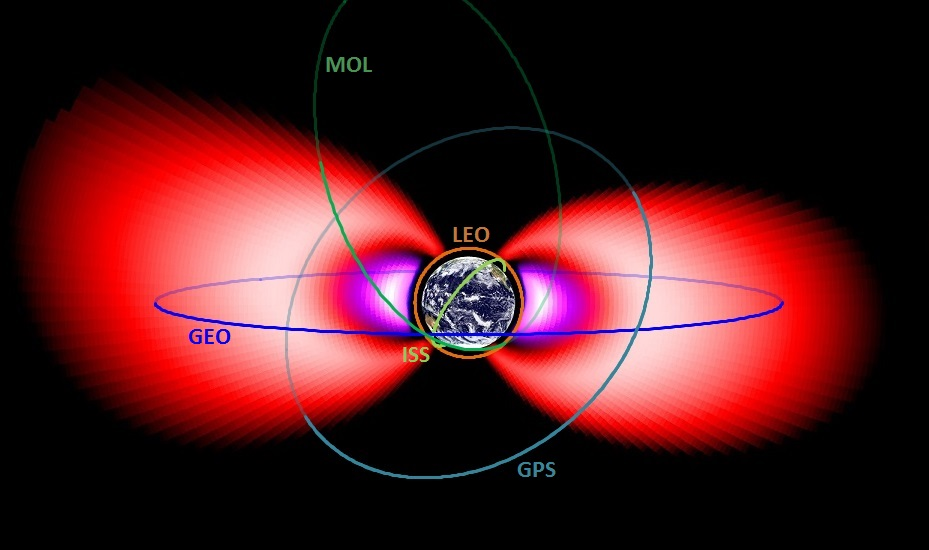Description
Radiation Data, Datasets and Databases of Relevance to Near-Earth Environment Modelling
The Space Environment In-Situ Suite (SEISS) on GOES-19 includes the Magnetospheric Particle Sensor – High Energy (MPS-HI), an instrument designed for measuring radiation belt electrons and protons that have energies responsible for charging of internal spacecraft elements, that can lead to disruptive or damaging electrostatic discharges. MPS-HI includes 5 electron telescopes and 5 proton...
The Geostationary Operational Environmental Satellite-R (GOES-R) series Magnetospheric Particle Sensor - Low Energy (MPS-Lo) instrument provides crucial measurements of 30 eV – 30 keV electrons and ions in the near-Earth space environment, essential for understanding and identifying spacecraft surface charging. Electrostatic discharge due to spacecraft charging is the leading cause of...
We discuss the current status of the combined dataset from the Energetic Particle Composition and Thermal Plasma Suite (RBSP-ECT) on Van Allen Probes. The dataset combines electron measurements from the HOPE, MagEIS and REPT instruments, providing almost 7 years of observations of the inner and outer radiation belts with energies from a few eV up to 10s MeV. Here, we will discuss the...
Discussion on access, usefulness and further exploitation of radiation data near-Earth.
The first Norwegian Radiation Monitor (NORM) sensor unit, flying aboard the Arctic Satellite Broadband Mission (ASBM), provides critical information on the space radiation environment along its three-apogee (TAP), 16-hour highly elliptical orbit (HEO). This work reviews the first year of NORM measurements, presenting the first detailed evaluation, analysis, and validation of radiation...
The satellite PROBA-V with the Energetic Particle Telescope (EPT) onboard, was launched on 7 May 2013 onto a polar Low Earth Orbit of 820 km altitude. Almost continuously in operation, EPT has provided flux spectra data for electrons (0.5–8 MeV), protons (9.5–248 MeV) and α-particles (38–980 MeV) with a time resolution of 2 seconds. Hence, the EPT data set covers already one full solar cycle...
The CREDANCE instrument suite flew on the DSX satellite between August 2019 and May 2021. CREDANCE monitored charging currents through a SURF detector, >40 MeV protons via a proton telescope, total ionising dose with two RADFETs, and LET spectra with an ion telescope. The data will be briefly reviewed before comparing the observations to predictions obtained with IRENE models. Comparisons will...
A Standard Radiation Environment Monitor (SREM) unit will be part of the European Radiation Sensors Array (ERSA) payload for the Lunar Gateway. This SREM unit will provide measurements of the lunar particle radiation environment, which is primarily dominated by Solar Energetic Particle (SEP) events and Galactic Cosmic Rays (GCRs). We present the reanalysis and creation of new datasets of SREM...
The 3D Energetic Electron Spectrometer (3DEES) has been developed as a science-class instrument that is optimized for the measurement of angle resolved electron spectra in the energy range 0.1 - 10 MeV in the Earth’s radiation belts. The demonstrator model of the instrument (measuring simultaneously from 6 directions) was launched on board PROBA-3 on 2024/12/05 into a highly elliptical orbit:...
Discussion on access, usefulness and further exploitation of radiation data near-Earth and on gaps in of radiation datasets near-Earth.
The interplanetary particle radiation environment is primarily characterized by cosmic rays and solar energetic particle events. Recently, a novel specification solar particle radiation model was developed with the aim to expand upon the ESA Solar Accumulated and Peak Proton and Heavy Ion Radiation Environment (SAPPHIRE) model. The SAPPHIRE-2S model uses the SEPEM Reference Dataset (RDS) and...

